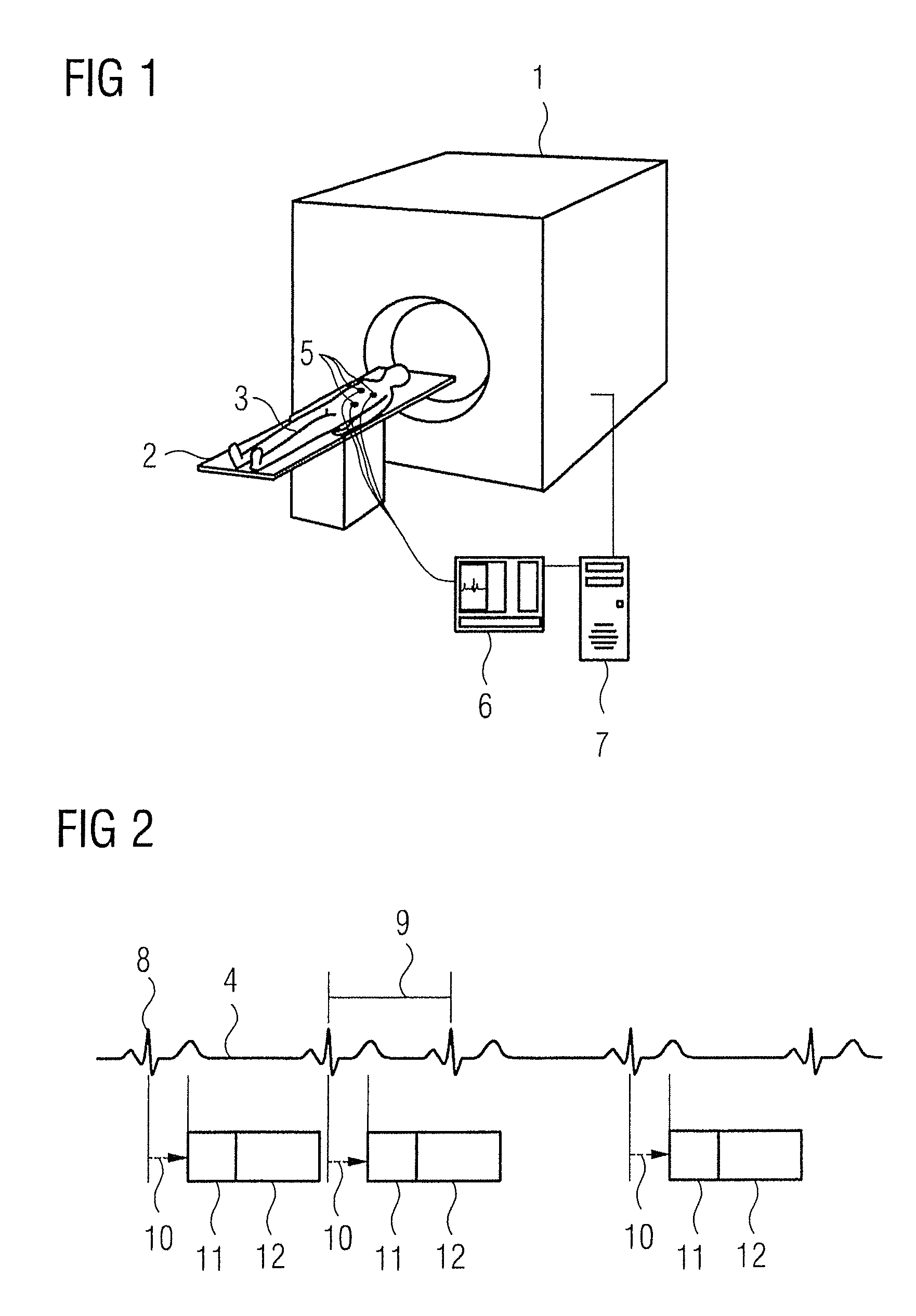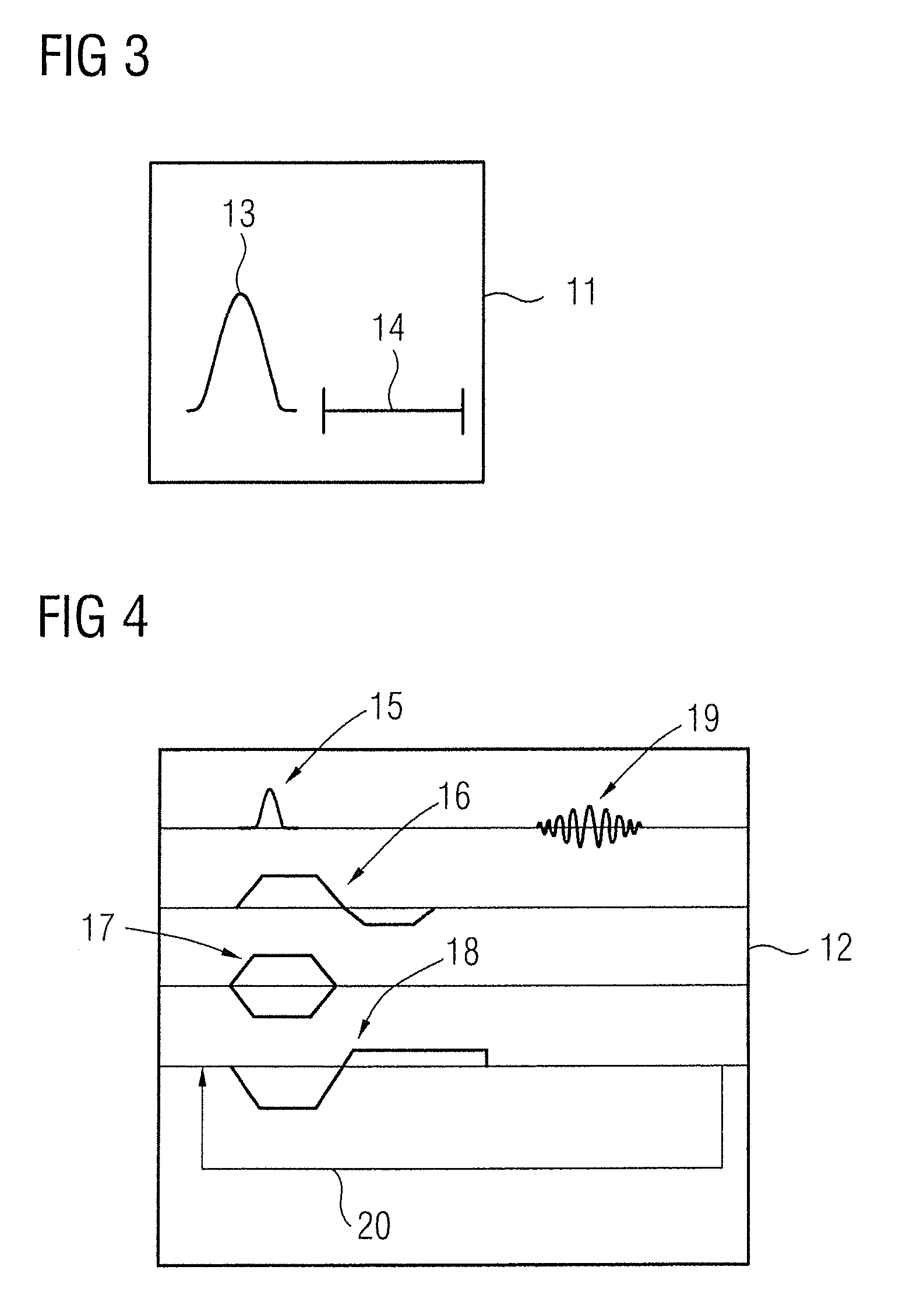Method and magnetic resonance tomography apparatus for triggered acquisition of magnetic resonance data
a technology of magnetic resonance data and tomography equipment, which is applied in the direction of diagnostic recording/measuring, instruments, and using reradiation, can solve the problems of shortening the wait time, and achieve the effect of reliable and disruption-free data acquisition
- Summary
- Abstract
- Description
- Claims
- Application Information
AI Technical Summary
Benefits of technology
Problems solved by technology
Method used
Image
Examples
Embodiment Construction
[0046]FIG. 1 shows a magnetic resonance system 1 having a bore in which a patient bed 2 can be inserted. To acquire magnetic resonance data from a patient 3, the patient 3 is supported on the patient bed 2 and electrodes 5 are located on the body of the patient 3 to detect an EKG signal 4. The signals detected by the electrodes 5 are relayed to the EKG device 6. The EKG device 6 communicates with the control device 7 of the magnetic resonance system 1, wherein the EKG device 6 and the control device 6 can naturally be spatially separated devices or can also be arranged in a single housing.
[0047]FIG. 2 shows a known method from the prior art for EKG-triggered implementation of a measurement. The R-spike 8 of the EKG signal 4 is used as a reference point of the cardiac phase. The time between the occurrence of two R-spikes 8 is designated as an RR-interval 9. The control device 7 of the magnetic resonance system 1 polls the trigger signal in the EKG device 6. If this occurs, a partial...
PUM
 Login to View More
Login to View More Abstract
Description
Claims
Application Information
 Login to View More
Login to View More - R&D
- Intellectual Property
- Life Sciences
- Materials
- Tech Scout
- Unparalleled Data Quality
- Higher Quality Content
- 60% Fewer Hallucinations
Browse by: Latest US Patents, China's latest patents, Technical Efficacy Thesaurus, Application Domain, Technology Topic, Popular Technical Reports.
© 2025 PatSnap. All rights reserved.Legal|Privacy policy|Modern Slavery Act Transparency Statement|Sitemap|About US| Contact US: help@patsnap.com



